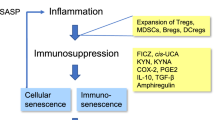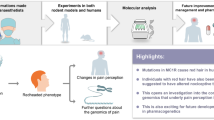Abstract
Despite the lack of insight on distinct mediators in the skin orchestrating the pathophysiological response to stress, hair loss has often been reported to be caused by stress. Recently we revealed the existence of a “brain-hair follicle axis” by characterizing the neurokinin (NK) substance P (SP) as a central element in the stress-induced threat to the hair follicle, resulting in premature onset of catagen accompanied by mast cell activation in the skin. However, our understanding of possible SP–mast cell interactions in the skin in response to stress was limited since the receptor by which SP activates skin mast cells and the extent of mast cell mediated aggravation of SP remained to be elucidated. We now employed NK-1 receptor knockout mice (NK-1R−/−) and mast cell deficient W/Wv mice and observed that stress-triggered premature induction of catagen and hair follicle apoptosis does not occur in NK1−/− and W/Wv mice. Furthermore, the activation status of mast cells was less in stressed NK1−/− mice than in wild-type control. Additionally, stress-induced upregulation of SP positive nerve fibers was absent in both NK-1R and W/Wv mice. These results indicate that the cross-talk between SP and mast cell activation via NK-1R appears to be the most important pathway in the regulation of hair follicle cycling upon stress response.








Similar content being viewed by others
Abbreviations
- CRF :
-
Corticotropin-releasing factor
- NGF :
-
Nerve growth factor
- NK-1R :
-
Neurokinin 1 receptor
- SP :
-
Substance P
References
Arck PC, Handjiski B, Hagen E, Joachim R, Klapp BF, Paus R (2001) Indications for a ‘brain-hair follicle axis (BHA)’: inhibition of keratinocyte proliferation and up-regulation of keratinocyte apoptosis in telogen hair follicles by stress and substance P. FASEB J 5:2536–2538
Arck PC, Handjiski B, Peters EMJ, Peter A, Hagen E, Fischer A, Klapp BF, Paus R (2003) Stress inhibits hair growth in mice by induction of premature catagen development and deleterious perifollicular inflammatory events via neuropeptide Substance P-dependent pathways. Am J Pathol 162:803–814
MacQueen G, Marshall J, Perdue M, Siegel S, Bienenstock S (1989) Pavlovian conditioning of rat mucosal mast cells to secrete rat mast cell protease II. Science 243:83–85
Russell M, Dark KA, Cummins RW, Ellman G, Callaway E, Peeke HV (1984) Learned histamine release. Science 225:733–734
Peters EMJ, Handjiski B, Kuhlmei A, Hagen E, Bielas H, Braun A, Klapp BF, Paus R, Arck PC (2004) Neurogenic inflammation in stress-induced termination of murine hair growth is promoted by nerve growth factor. Am J Pathol 165:259–271
Teichberg VI, Cohen S, Blumberg S (1981) Distinct classes of substance P receptors revealed by a comparison of the activities of substance P and some of its segments. Regul Pept 1:327–333
Lee CM, Iversen LL, Hanley MR, Sandberg BEB (1982) The possible existence of multiple receptors for substance P. Naunyn-Schmiedebergs Arch Pharmacol 318:281–287
Buck SH, Burcher E (1986) The tachykinins: a family of peptides with a brood of receptors. Trends Pharmacol Sci 7:65–68
Nakanishi S (1991) Mammalian tachykinin receptors. Annu Rev Neurosci 14:123–136
Hadshiew IM, Foitzik K, Arck PC, Paus R (2004) Burden of hair loss: stress and the underestimated psychosocial impact of telogen effluvium and androgenetic alopecia. J Invest Dermatol 123:455–457
Hou L, Kapas S, Cruchley AT, Macey MG, Harriott P, Chinni C, Stone SR, Howells GL (1998) Immunolocalization of protease-activated receptor-2 in skin: receptor activation stimulates interleukin-8 secretion by keratinocytes in vitro. Immunology 94:356–362
Peters EM, Botchkarev VA, Botchkareva NV, Tobin DJ, Paus R (2001) Hair-cycle-associated remodeling of the peptidergic innervation of murine skin, and hair growth modulation by neuropeptides. J Invest Dermatol 116:236–245
Saban R, Gerard NP, Saban MR, Nguyen NB, DeBoer DJ, Wershil BK (2002) Mast cells mediate substance P-induced bladder inflammation through an NK (1) receptor-independent mechanism. Am J Physiol Renal Physiol 283:F616–629
Aridor M, Traub LM, Sagi-Eisenberg R (1990) Exocytosis in mast cells by basic secretagogues: evidence for direct activation of GTP-binding proteins. J Cell Biol 111:909–917
Peters SP (1995) Mechanism of mast cell activation. In: Busse WW, Holgate ST (eds) Asthma and rhinitis. Blackwell, Oxford, pp 221–230
Kleij HP van der, Ma D, Redegeld FA, Kraneveld AD, Nijkamp FP, Bienenstock J (2003) Functional expression of neurokinin 1 receptors on mast cells induced by IL-4 and stem cell factor. J Immunol 171:2074–2079
Laird JM, Olivar T, Roza C, De Felipe C, Hunt SP, Cervero F (2000) Deficits in visceral pain and hyperalgesia of mice with a disruption of the tachykinin NK1 receptor gene. Neuroscience 98:345–352
De Felipe C, Herrero JF, O’Brien JA, Palmer JA, Doyle CA, Smith AJ, Laird JM, Belmonte C, Cervero F, Hunt SP (1998) Altered nociception, analgesia and aggression in mice lacking the receptor for substance P. Nature 392:394–397
Galli SJ, Tsai M, Gordon JR, Geissler EN, Wershil BK (1992) Analyzing mast cell development and function using mice carrying mutations at W/c-kit or Sl/MGF (SCF) loci. Ann N Y Acad Sci 664:69–88
Galli SJ, Wershil BK (1996) The two faces of the mast cell. Nature 381:21–22
Arck PC, Merali FS, Stanisz AM, Stead RH, Chaouat G, Manuel J, Clark DA (1995) Stress-induced murine abortion associated with substance P-dependent alteration in cytokines in maternal uterine deciduas. Biol Reprod 53:814–819
Müller-Röver S, Handjiski B, van der Veen C, Eichmuller S, Foitzik K, McKay IA, Stenn KS, Paus R (2001) A comprehensive guide for the accurate classification of murine hair follicles in distinct hair cycle stages. J Invest Dermatol 117:3–15
Chase HB (1953) Physical factors which influence the growth of hair. In: Montagna W, Ellis RA (eds) The biology of hair growth. Academic, New York, pp 435–440
Paus R, Stenn KS, Link RE (1990) Telogen skin contains an inhibitor of hair growth. Br J Dermatol 122:777–784
Slominski A, Paus R, Plonka P, Chakraborty A, Maurer M, Pruski D, Lukiewicz S (1994) Melanogenesis during the anagen-catagen-telogen transformation of the murine hair cycle. J Invest Dermatol 102:862–869
Stenn KS, Paus R (2001) Controls of hair follicle cycling. Physiol Rev 81:449–494
Paus R, Müller-Röver S, Botchkarev VA (1999) Chronobiology of the hair follicle: hunting the “ hair cycle clock.” J Investig Dermatol Symp Proc 4:338–345
Lindner G, Botchkarev VA, Botchkareva NV, Ling G, van der Veen C, Paus R (1997) Analysis of apoptosis during hair follicle regression. Am J Pathol 151:1601–1617
Williams RM, Bienenstock J, Stead RH (1995) Mast cells: the neuroimmune connection. Chem Immunol 61:208–235
Cao T, Gerard NP, Brain SD (1999) Use of NK1 knockout mice to analyze substance P-induced edema formation. Am J Physiol 277:R476–R481
Yano H, Wershil BK, Arizono N, Galli SJ (1989) Substance P-induced augmentation of cutaneous vascular permeability and granulocyte infiltration in mice is mast cell dependent. J Clin Immunol 84:1276–1286
Santarelli L, Gobbi G, Debs PC, Sibille ET, Blier P, Hen R, Heath MJ (2001) Genetic and pharmacological disruption of neurokinin 1 receptor function decreases anxiety-related behaviors and increases serotonergic function. Proc Natl Acad Sci U S A 98:1912–1917
Ansel JC, Brown JR, Payan DG, Brown MA (1993) Substance P selectively activates TNF-α gene expression in murine mast cells. J Immunol 150:4478–4485
Chrousos GP (1998) Stressors, stress, and neuroendocrine integration of the adaptive. Response: the 1997 Hans Selye Memorial Lecture. Ann NY Acad Sci 851:311–335
Singh LK, Pang X, Alexacos N, Letourneau R, Theoharides TC (1999) Acute immobilization stress triggers skin mast cell degranulation via corticotropin releasing hormone, neurotensin and substance P: a link to neurogenic skin disorders. Brain Behav Immun 13:225–239
Theoharides TC, Singh LK, Boucher W, Pang X, Letourneau R, Webster E, Chrousos G (1998) Corticotropin-releasing hormone induces skin mast cell degranulation and increased vascular permeability, a possible explanation for its pro-inflammatory effects. Endocrinology 139:403–413
Rückert R, Lindner G, Bulfone-Paus S, Paus R (2000) High-dose proinflammatory cytokines induce apoptosis of hair bulb keratinocytes in vivo. Br J Dermatol 143:1036–1039
Botchkarev VA, Botchkareva NV, Albers KM, Chen LH, Welker P, Paus R (2000) A role for p75 neurotrophin receptor in the control of apoptosis-driven hair follicle regression. FASEB J 14:1931–1942
Kandere-Grzybowska K, Gheorghe D, Priller J, Esposito P, Huang M, Gerard N, Theoharides TC (2003) Stress-induced dura vascular permeability does not develop in mast cell-deficient and neurokinin-1 receptor knockout mice. Brain Res 980:213–222
Cotsarelis G, Cheng SZ, Dong G, Sun TT, Lavker RM (1989) Existence of slow-cycling limbal epithelial basal cells that can be preferentially stimulated to proliferate: implications on epithelial stem cells. Cell 57:201–209
Panteleyev AA, Jahoda CA, Christiano CA (2001) Hair follicle predetermination. J Cell Sci 114:3419–3431
Rupniak NM, Carlson EJ, Webb JK, Harrison T, Porsolt RD, Roux S, de Felipe C, Hunt SP, Oates B, Wheeldon A (2001 Comparison of the phenotype of NK1R-/- mice with pharmacological blockade of the substance P (NK1) receptor in assays for antidepressant and anxiolytic drugs. Behav Pharmacol 12:497–508
Acknowledgements
This work was supported by grants from the German Research Foundation (Deutsche Forschungsgemeinschaft, Ar 232/14-1, Pa 345/11-1) and Charité (UFF 99-648). We thank R. Pliet, E. Hagen, P. Moschansky, and P. Busse for their excellent technical assistance.
Author information
Authors and Affiliations
Corresponding author
Rights and permissions
About this article
Cite this article
Arck, P.C., Handjiski, B., Kuhlmei, A. et al. Mast cell deficient and neurokinin-1 receptor knockout mice are protected from stress-induced hair growth inhibition. J Mol Med 83, 386–396 (2005). https://doi.org/10.1007/s00109-004-0627-z
Received:
Accepted:
Published:
Issue Date:
DOI: https://doi.org/10.1007/s00109-004-0627-z




